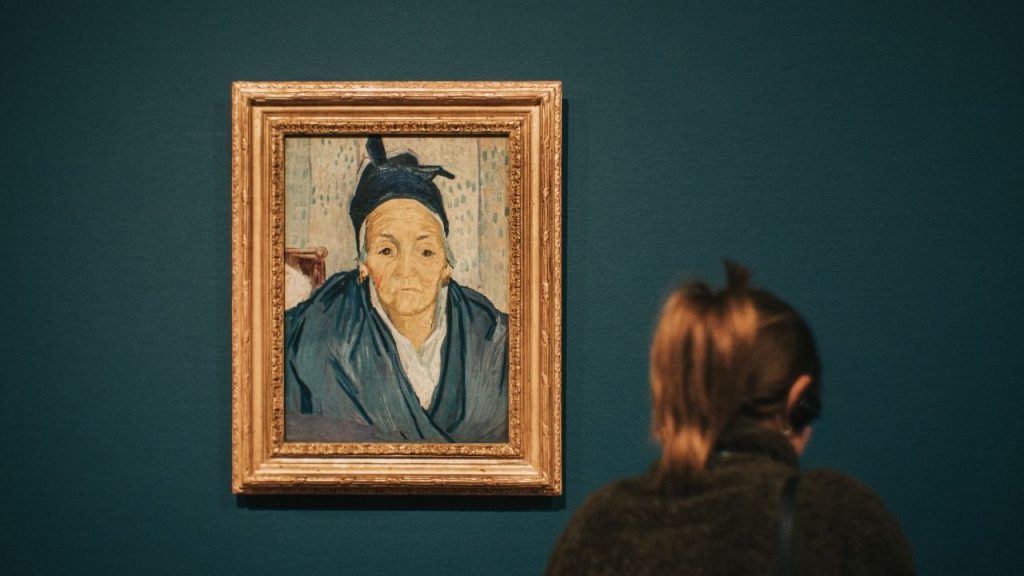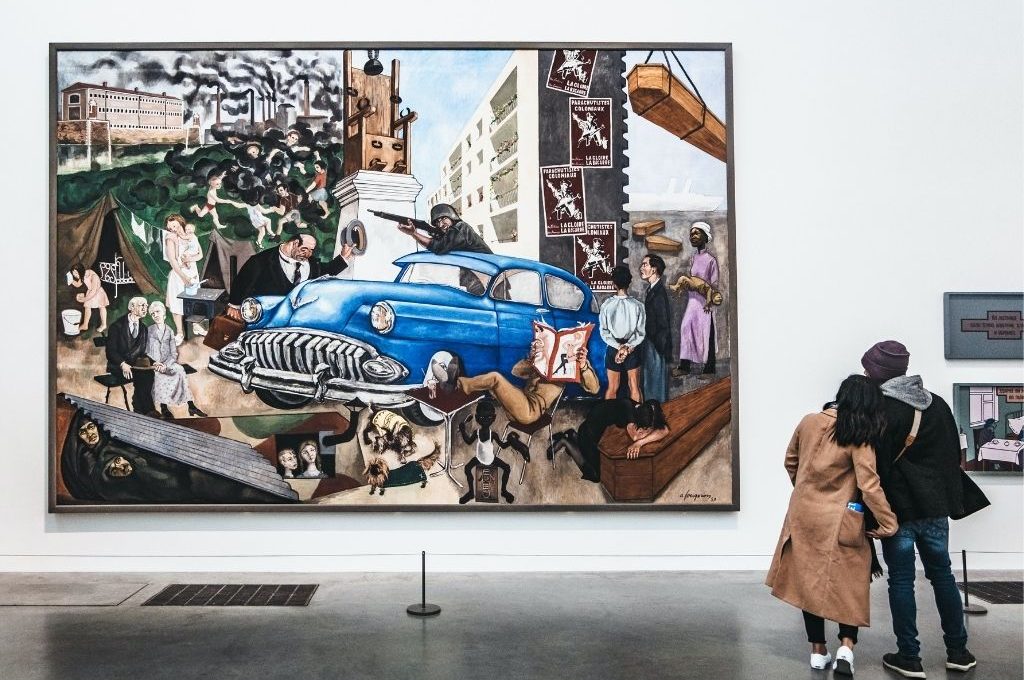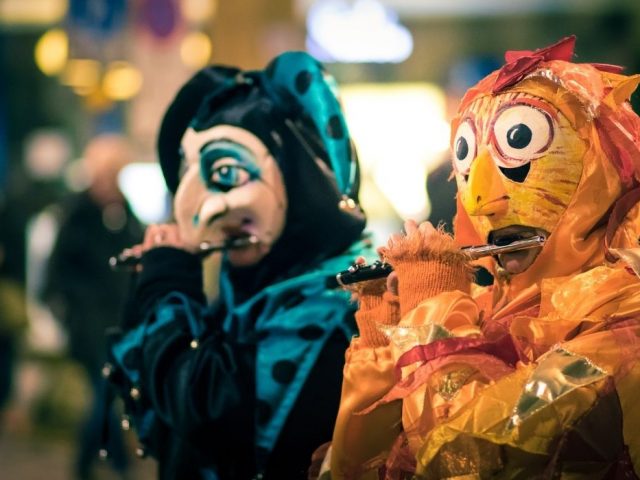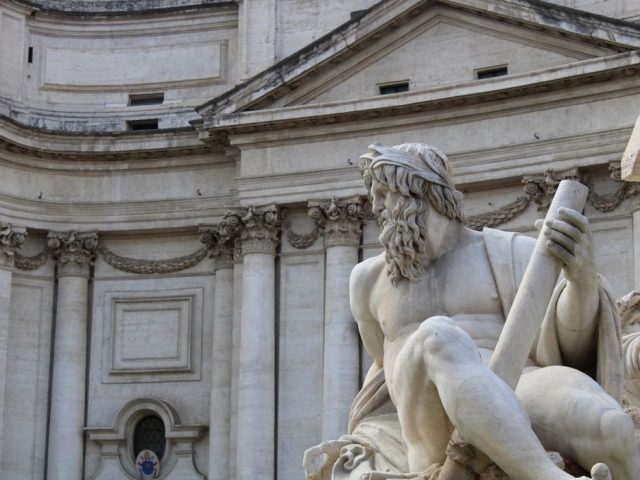Have you ever found yourself looking at a modern painting and wondering what it could possibly mean? If so, you’re not alone! The world of modern art encompasses countless movements, styles, and techniques. Modern art movements and artists have been around from the mid-19th century until the end of the 20th century. In this article, we’ll take a small journey focusing on some important art movements and see how they shaped the art world.
🛎️ Reminder: Don’t forget to download Piri Guide mobile app to explore the works of famous artists and the museums or cities that house them! 😊
How Did Art Movements Emerge?
Art movements emerged in response to both the cultural and historical contexts of their time. Artists aimed to break free from the limitations imposed by traditional techniques and styles and therefore sought to create something new and original. This creativity and endless pursuit led to the formation of art movements and the artists who created them. Additionally, each art movement, including modern art movements, was influenced by social, political, and economic factors, as well as the prevailing art movements of their time.
Modern Art Movements to Know

Futurism
Futurism appeared in Italy in 1909 and continued until the early 1920s. The movement was a reflection of the admiration for speed and technology. Futurist artists aimed to capture the energy and dynamism of modern life in their works. They were interested in the intersection of art and science and often incorporated scientific principles into their works. If you want to learn more about Futurism, we recommend checking out the works of Umberto Boccioni, Giacomo Balla, and Carlo Carrà.
Cubism
Cubism was one of the modern art movements that used geometric shapes to break down objects into their component parts. It emerged in France at the beginning of the 20th century. Cubist artists rejected traditional perspective and representational methods, instead aiming to create a new type of art based on principles of abstraction and fragmentation. Some of the most famous Cubist artists include Pablo Picasso, Georges Braque, and Juan Gris. We can say that Picasso and Braque, in particular, developed this movement.
Also, if you have plans to visit Barcelona and Picasso Museum, you can download the digital tour guide and audio content app Piri Guide.
The Piri Guide mobile app offers you the best routes for Barcelona, detects your location, and automatically starts telling you the story of where you are. All you have to do is put on your headphones and follow the route. We have talked about many works of art there!
Fauvism
In the 1900s, a group of artists in France, led by Henri Matisse and André Derain, introduced a new style of art called Fauvism to the modern art world. Although short-lived, Fauvism played a significant role in the development of modern art. Fauvist artists created their works with bright colours and loose brushstrokes, rejecting traditional colours and producing vibrant, emotional, and striking pieces. When we look at Fauvism, we can see that landscapes and still-life paintings are stylized and depicted in an exaggerated way. You can explore these depictions in the works of Henri Matisse, André Derain, and Raoul Dufy.
Realism
Realism was among the modern art movements that arose in the mid-19th century. The Realism movement aimed to oppose the idealized and romanticized depictions of the world that had dominated art for centuries. Realist painters such as Gustave Courbet depicted the working class and their living environments in a simple style, without any need for ornamentation. In short, Realism boldly attempted to capture the realities of everyday life as they were, without any embellishment.
Expressionism
Expressionism first emerged in Germany and is characterized by intense emotions and distorted forms. Artists such as Ernst Ludwig Kirchner and Wassily Kandinsky, who are well-known for their works in Expressionism, tried to express their innermost feelings by using bright, bold colours and exaggerated forms to create a sense of chaos in their work. It had a significant impact on the development of modern art. Their contributions to art can still be seen in the works of contemporary artists. Some of the most famous Expressionist artists include Edvard Munch, Franz Marc, and Egon Schiele.
Impressionism
Impressionism dates back to mid-19th century France with the leadership of artists such as Claude Monet and Pierre-Auguste Renoir. The first painters to adopt this movement generally depicted landscapes in a spontaneous style. The aim was to capture the transient, atmospheric qualities of light and colour. In other words, impressionism showed us how fleeting and fast life can be. If you take a closer look at these brief moments of life through the eyes of Claude Monet or Edgar Degas, you will better understand the feeling we are talking about.
Pop Art
Pop Art became known in the 1950s and 60s in both Britain and the United States, with artists such as Andy Warhol and Roy Lichtenstein at the forefront. This movement used images from advertisements, comics, and other sources as source material for their work. Pop Art attempted to embrace popular culture and mass media at one point. We often see bright and bold colours in the works of Pop Art artists, as well as a graphic style.
If you think that you are done with modern art movements (for now 😊), you can check out our blog post “Girl with a Pearl Earring: A Classic Art by Vermeer”.




